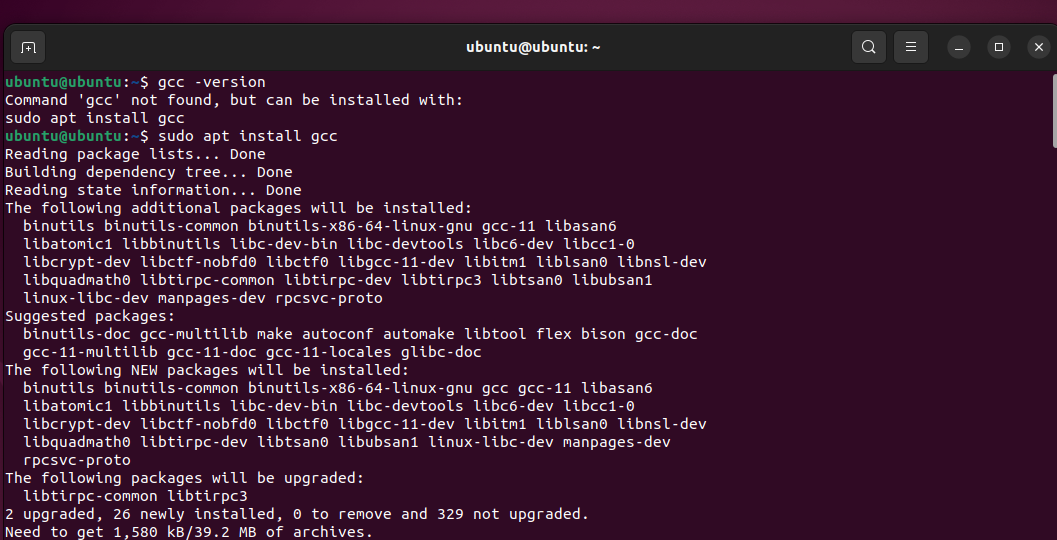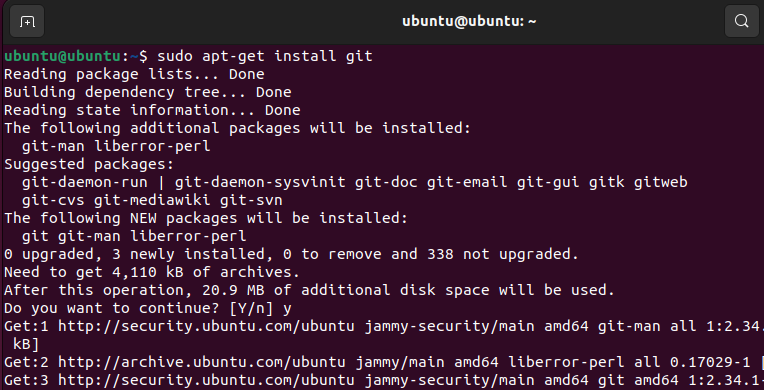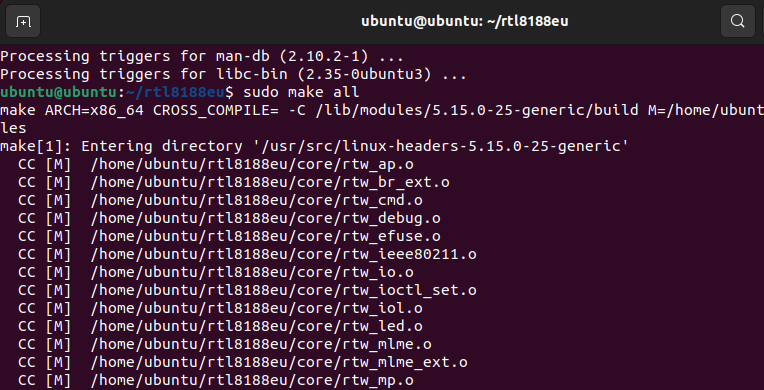- Thread: Linux wifi usb adapter drivers?
- Linux wifi usb adapter drivers?
- Re: Linux wifi usb adapter drivers?
- Re: Linux wifi usb adapter drivers?
- Re: Linux wifi usb adapter drivers?
- Re: Linux wifi usb adapter drivers?
- How to install TP-LINK WiFi adapter driver in Linux
- Prerequisites
- How to install the TP Link Wifi driver on Ubuntu
- How to install the driver in Kali Linux
- Summary
Thread: Linux wifi usb adapter drivers?
First Cup of Ubuntu
Linux wifi usb adapter drivers?
Ok, so I’m new to linux and I’m so confused about this driver thing in linux. Can someone just fill me in on how do installing drivers in linux work? I obviously know how to install them in windows 7 using a disk and everything or getting the driver in via internet. But what about linux? I’m dual booting ubuntu by the way. what do i need to do to install my wifi driver? How does installing drivers really work in linux? I would like a universal answer if possible. PLEASE do not make fun of me because I’m a noob. I know how drivers work in this and that, but in linux, it’s just so gosh dang frustrating like HECK. SOMEONE HELP! Thanks
Caffeine, theine, guaranine free.
Re: Linux wifi usb adapter drivers?
Thread moved to Networking and Wireless.
Welcome. First thing: deep breath and slow down. You may not even need to install drivers. Linux is not like Win and many drivers are already present in the kernel. No need to drag them in from all over and insert 25 digit authentication keys. A few questions.
You have Ubuntu installed?
If so, which release?
Is this an internal wifi card or a USB wifi dongle?
If USB, plug it in and run these two commands:
sudo lsusb sudo lshw -C network
If it is internal, just run the second command. Post the output back here between code tags (see the link in my signature at bottom of this post for how).
This may sound silly, but how do you know it is not working? If USB, have you plugged it in and checked? Have you plugged it in and done an update? Have you done an update since you installed? If not, do so then plug the device in if USB or check the network icon for networks if internal.
PS: There is rarely a universal answer here and certainly not to this. Some cards will work right of the bat and others no. Not about Ubuntu, it’s about the companies that make the cards. If you stick around you’ll find that you will buy things that you know work in Linux rather than the first thing off the shelf that looks good. Makes life a LOT easier.
First Cup of Ubuntu
Re: Linux wifi usb adapter drivers?
Sorry for the long response, thanks btw I really appreciate it. Yeah I already knew about the proprietary drivers but my question is, how do I install the proprietary drivers on ubuntu? What’s the difference of installing wireless cards and usb and routers? My version of ubuntu is 16.0.4.1 desktop and I am dual booting.
Forums Moderator
Re: Linux wifi usb adapter drivers?
Do you have internet access with Ubuntu?
I don’t think there are any proprietary drivers for USB wifi devices in Ubuntu. Do you currently have a USB wireless adapter or are you looking for recommendations?
If you do have a USB wifi, please provide the results from terminal (CTRL + t) then enter
Ubuntu Member
Join Date Aug 2005 Location South Carolina, USA Beans 25,970 —> Beans 25,970 Distro Ubuntu Development Release
Re: Linux wifi usb adapter drivers?
How does installing drivers really work in linux? I would like a universal answer if possible. PLEASE do not make fun of me because I’m a noob. I know how drivers work in this and that, but in linux, it’s just so gosh dang frustrating like HECK. SOMEONE HELP!
No one here is going to make fun of you because you are a noob unless they want to get banned. Jeremy and I feel quite strongly about that. As well, he is one of the nicest, most polite gurus we see here. You are in great hands.
A great many wireless drivers are built in to the Linux kernel already. All that is necessary is to insert the device and connect. A very few devices, either very new or very old, don’t yet have default drivers and we must install them after the fact.
If your device isn’t working, we need to figure out what driver to install, develop a process and tell you how to do it. Jeremy will explain the steps as he goes along.
The first step is to identify the device. Please insert it and then open a terminal Ctrl+Alt+t and run:
Bus 006 Device 001: ID 1d6b:0001 Linux Foundation 1.1 root hub
Bus 002 Device 002: ID 058f:6366 Alcor Micro Corp. Multi Flash Reader
Bus 002 Device 001: ID 1d6b:0002 Linux Foundation 2.0 root hub
Bus 005 Device 001: ID 1d6b:0001 Linux Foundation 1.1 root hub
Bus 001 Device 002: ID 0846:9020 NetGear, Inc. WNA3100(v1) Wireless-N 300 [Broadcom BCM43231]
Bus 001 Device 001: ID 1d6b:0002 Linux Foundation 2.0 root hub
Bus 004 Device 003: ID 046d:c52b Logitech, Inc. Unifying Receiver
Bus 004 Device 002: ID 046d:c517 Logitech, Inc. LX710 Cordless Desktop Laser
«Oh, Ubuntu, you are my favorite Linux-based operating system» —Dr. Sheldon Cooper, B.Sc., M.Sc., M.A., Ph.D., Sc.D.
How to install TP-LINK WiFi adapter driver in Linux
If you’re having a problem connecting to your Wi-Fi network on your Linux device or your device is not showing any Wi-Fi network, you will need to use a wireless USB adapter. If you have a TP-Link Wi-Fi adapter, you can install the driver and get it working by following our instructions.
Prerequisites
- Before installing the driver make sure your adapter is compatible with Linux devices. You can check this by going to the TP-Link website and searching for the model number of your adapter. As an example, we will be using the R8188EU model.
- You will need an internet connection to install your suitable driver, connect a cable directly to your machine or use your mobile hotspot to access the internet.
How to install the TP Link Wifi driver on Ubuntu
1. Go to the application menu, search for Terminal, and run it.
Now the first thing to do is update all the packages using the command below:
2. To install all the packages write the command:
3. After you have installed all the packages, reboot the device. Next, you will need to install GCC if you don’t have it.
You can verify it by executing the command:
4. Now to download the driver from the GitHub repository, we will need to install git on our device:
5. After installing git, search for the relevant driver on GitHub. I will be using this driver. But you can get a suitable driver from lwfinger’s repository.
6. Now return to your desktop folder where we will start downloading the driver using the below command: (Please note that the GitHub link that you should use after the git clone command varies with your driver.)
git clone https://github.com/lwfinger/rtl8188eu
7. The above command will clone the git repository in a directory named rtl8188eu (Name of your driver) locally. Now, cd into the directory:
8. For the next step, we need to have ‘make‘ installed. To verify, execute the command:
If it’s not found, install it by using the command:
9. For compiling the driver use command:
10. To install the compiled files, use the command:
Now reboot the system, and connect the Wi-Fi adapter to a USB port. Open a terminal to use ifconfig to check if the adapter is listed.
Go to Settings then the Wi-Fi tab there should be a new option of Wi-Fi adapter, connect to it. Now you are ready to use the adapter to access the internet.
How to install the driver in Kali Linux
Compared to other Debian-based distros like Ubuntu, Kali Linux has a bit different process for installing the drivers. Here’s the process for Kali Linux users:
1. Open a terminal window and update all the packages using the command below:
sudo apt update sudo apt upgrade
2. Now reboot your device. After rebooting, open a terminal window and use the command below to install build-essential:
sudo apt install build-essential
3. Try either one of these commands, and see which works for you:
sudo apt install linux-headers-`uname -r`
sudo apt install linux-headers-5.10.0-kali6-amd64
4. Now, we will install DKMS:
5. After that, use the below command (Note that I am using the command for the ‘ r8188eu ‘ adapter, and it might differ for your adapter):
6. Now to download the driver from the GitHub repository, we will need to install git on our device:
7. After installing git, search for the suitable driver on GitHub. I will be using the following driver:
8. Now return to the terminal where we will start downloading the driver using the below command: (Note that the link used after the git clone command might differ for your system depending on the TP-Link device you own.)
git clone https://github.com/aircrack-ng/rtl8188eus
The above command will clone the git repository in a directory named rtl8188eu locally.
9. Use ls to show all directories, then cd into the directory:
10. Now move to root using the command:
11. After this, echo into the Realtek (or similar adapter brand) configuration file:
echo "blacklist r8188eu" > "/etc/modprobe.d/realtek.conf"
12. We need to reboot it again, and after that, use cd to go back into the driver directory:
13. Check whether ‘make’ is installed on your system or not:
If it’s not found, install it by using the command:
14. For compiling the driver files, use the command:
sudo make sudo make install
15. And use the below command to configure the driver:
16. Now reboot the system and connect the Wi-Fi adapter to your device. Open a terminal window and use ifconfig to check if the adapter is listed.
If you can connect to the internet using Wi-Fi, congratulations, you have successfully installed the TP-Link Wi-Fi adapter driver on your Kali Linux machine.
Summary
Installing wireless adapter driver files manually is not that easy in any operating system. This is why most hardware devices are installed automatically when we boot up our system for the first time. Regardless of the reason you wanted to install the drivers manually, I hope you were able to accomplish your goals.







